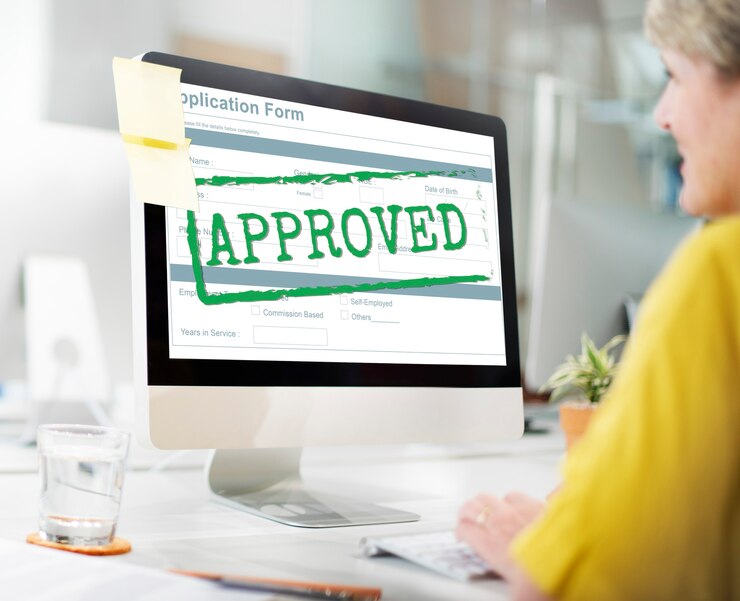Securing funding for your business can be a challenge—especially when you don’t have assets to put up as collateral. Fortunately, unsecured business loans offer a viable path forward for entrepreneurs who need financing without risking personal or business property. In this guide, we’ll explore how to qualify for a loan without collateral, what lenders consider important, and which funding options may be a great fit for your business.
Understanding Unsecured Business Loans
Unsecured business loans are financing solutions that don’t require borrowers to pledge any assets. That means you don’t need to offer real estate, vehicles, or equipment as a guarantee for repayment. Instead, approval is based on other factors like business performance, credit score, and revenue.
These loans are appealing to startups and small businesses that are asset-light or just starting out. However, because they pose more risk to the lender, unsecured loans usually come with higher interest rates and shorter repayment terms.
Common Features:
- No collateral required
- Faster approval process
- Credit and revenue-based evaluation
- Flexible repayment terms

Key Factors for Business Loan Approval
Even though collateral isn’t required, lenders still assess your financial reliability. Here’s what they typically look for:
1. Time in Business
Most lenders prefer businesses that have been operating for at least 6–12 months. A longer track record demonstrates stability.
2. Credit Score
Both your personal and business credit scores can impact loan decisions. A score of 600 or above is often preferred for unsecured loans.
3. Monthly Revenue
Lenders want to see that your business has steady revenue. The higher your monthly sales, the better your chance of approval.
4. Business Plan & Cash Flow
A well-documented business plan and cash flow projection show that you’re planning ahead and capable of managing debt.
How to Improve Your Chances of Approval
If you want to get approved for an unsecured business loan, preparation is key. Here are a few steps to increase your odds:
- Check your credit reports and resolve any inaccuracies.
- Increase your revenue, even modestly, before applying.
- Reduce outstanding debts to improve your debt-to-income ratio.
- Organize your financial statements (profit & loss, bank statements, tax returns).
Documentation Checklist
Document | Purpose |
Business bank statements | Proof of income and spending habits |
Tax returns | Demonstrates financial consistency |
Profit & loss statement | Shows profitability and performance |
ID & business license | Confirms identity and legal operation |

Revenue-Based Financing: A Flexible Option
Revenue-based financing (RBF) is a great unsecured funding method for businesses with consistent monthly income. Instead of fixed payments, repayments are made as a percentage of your revenue.
This option is ideal if your cash flow fluctuates. Payments go down when your revenue dips, giving you flexibility in tough months.
Key Benefits of RBF:
- No fixed repayment schedule
- Approval based on monthly revenue
- Minimal credit requirements
- Quick funding (1–3 days)
Merchant Cash Advances (MCA)
If your business processes daily card transactions, a merchant cash advance might be a fit. You get a lump sum upfront and repay it through a percentage of your daily credit or debit card sales.
MCA is especially useful for restaurants, retail shops, and service businesses that rely on card payments.
MCA vs. Traditional Loans
Feature | MCA | Traditional Loan |
Collateral | Not required | Often required |
Approval time | Same-day possible | 1–2 weeks |
Repayment method | Daily card sales | Monthly bills |
Flexibility | High | Moderate |
Online Lenders vs. Traditional Banks
When applying for unsecured financing, you can either go through a traditional bank or an online lender. Each has its own set of advantages and drawbacks.
Traditional Banks:
- Lower interest rates
- Longer application process
- Require excellent credit
Online Lenders:
- Fast approval (as little as 24 hours)
- Easier qualification standards
- Offer modern solutions like MCAs and RBF
If speed and accessibility are your priorities, online lenders are often the better choice.
Avoiding Scams and Predatory Lenders
Because unsecured business loans come with higher risks, some lenders may take advantage. Look out for these red flags:
- No clear repayment terms
- Pressure to sign quickly
- Upfront fees before approval
- No reviews or contact information
To stay safe:
- Work with reputable business loan brokers.
- Ask questions about interest rates, total repayment, and early payoff penalties.
- Read the fine print and consult a legal advisor if needed.

When to Consider a Business Loan Without Collateral
Not all funding needs require traditional loans. If any of the following apply, an unsecured option may be best:
- You need fast funding for payroll or inventory
- You’re launching a new marketing campaign
- You’re investing in seasonal stock
- You want to cover a temporary cash flow gap
Just remember to borrow only what you can afford to repay—even if it’s easy to qualify.
Choosing the Right Loan for Your Business
There are many types of unsecured business loans, and choosing the right one depends on your unique needs. Let’s look at a few options side by side:
Loan Type Comparison Table
Loan Type | Best For | Speed | Repayment |
Revenue-Based Financing | Businesses with steady monthly revenue | 1–3 days | % of revenue |
Merchant Cash Advance | Retailers, restaurants | Same day | % of card sales |
Business Line of Credit | Frequent but small cash needs | 1 week | Draw as needed |
Term Loan (unsecured) | Medium-term investments | 1–2 weeks | Fixed payments |
Need Help Deciding? Start with This
Understanding your options is the first step to smart funding. If you’re still unsure whether to apply for an unsecured loan or explore other solutions, it’s helpful to weigh the pros and cons of each method.
➡️ Check out our guide on the Pros and Cons of Unsecured Business Loans to compare risks, benefits, and real-life use cases before applying.
We’re here to support your growth with the tools and insights that make business loan approval easier—even without collateral.






